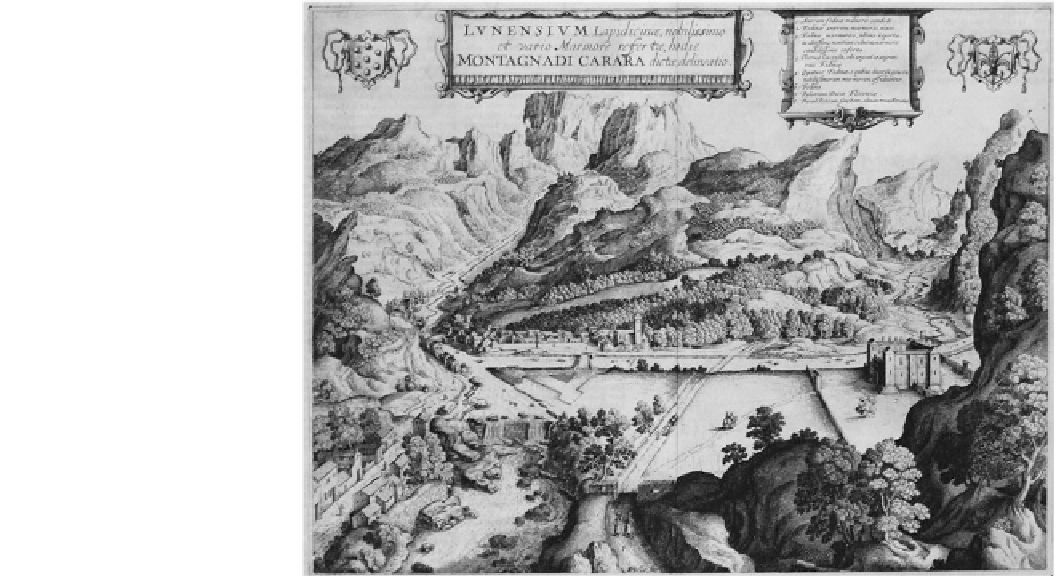Geology Reference
In-Depth Information
3
The Origins of Geotourism in the Apuan
Alps
detailed, with the identi
cation of polyphase deformations,
found to be consistent with the Cenozoic crustal movements
of the western Mediterranean area.
The karst caves occurring widely in the Apuan Alps rep-
resent an exciting
The geographical and orographic characteristics of the Apuan
Alps have attracted naturalist-travellers since the 16th century,
when geologists and botanists combined their excursions with
the pleasure of improving their knowledge of nature. Herb-
orists were the
c investigation. Since the
18th century, the more easily accessible caves have attracted
many naturalists (Spallanzani
1783
). However, modern spe-
leology is considered to begin in 1840, following the dis-
covery of the
eld of scienti
rst to climb peaks in search of rare medicinal
plants (Pichi Sermolli
1999
). In the 17th century, the Dutch
cartographer, Jan Janszoon, visited the area and mapped the
valley of Seravezza with its sites of marble excavation and
silver extraction (Fig.
3
). Anglo-Saxon travelers andmountain
climbers played an important role in promoting the area as a
compulsory leg of the Tuscan part of the Italian
“
Grand Tour
”
(Lassels
1698
). The Apuan Alps, visible from western Flor-
ence, were particularly fascinating for its citizens, who grew
up surrounded by Renaissance culture and were, therefore,
naturally inclined to discover nature from both the aesthetic
and scienti
rst entrance to the Corchia Cave system, the
largest in Italy and one of the biggest in Europe (more than
50 km of galleries with a depth of about 1,200 m). In the
second half of the 19th and early 20th centuries, the scienti
c
community turned to the Apuan caves speci
cally for their
palaeontological and palaeoethnological
interest (Regnoli
1867
). During this period, the
rst true explorations of Grotta
all
'
Onda Cave (Mt. Matanna) and Equi Cave (Lunigiana)
yielded many lithic artifacts from the Neolithic to Mousterian
and signi
cant remains of extinct W
ü
rmian fauna (cave bear,
lion, leopard, etc.). The
rst inventory of the Apuan karst
caves dates back to 1913 (Brian and Mancini
1913
) and since
then investigations have advanced through collective explo-
rations and systematic surveys. To date, more than 1,000
karst caves have been discovered and explored.
c points of view. Their visits were already
numerous in the 18th century when several hikers went, often
on foot, from the Tuscan city to the the Apuan Alps. Targioni
Tozzetti (
1752
) described the Apuan rocks and minerals as
well as physical landforms and
uvial erosion.
Fig. 3
Seravezza valley drawn
by Jan Janszoon (1588
-
1664)

